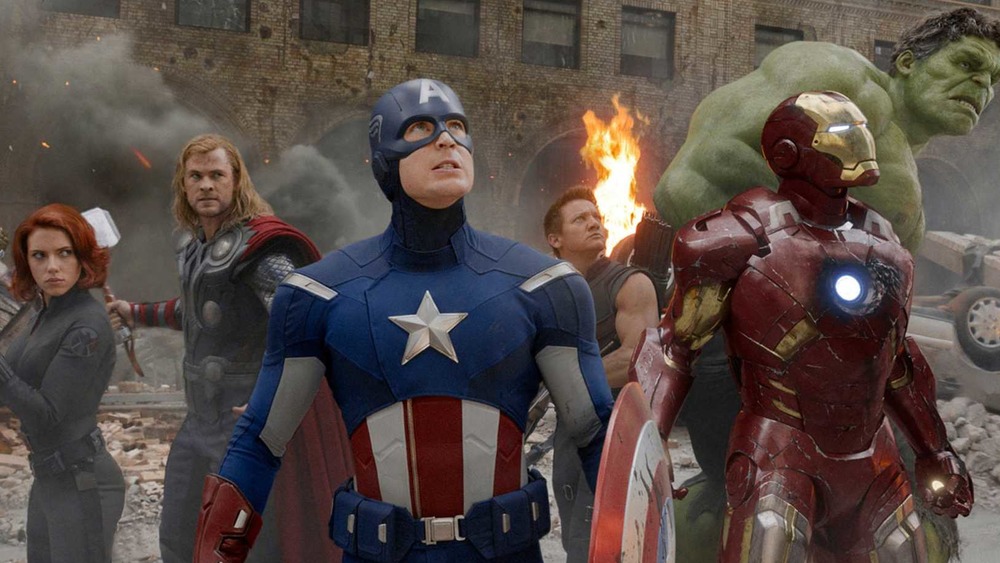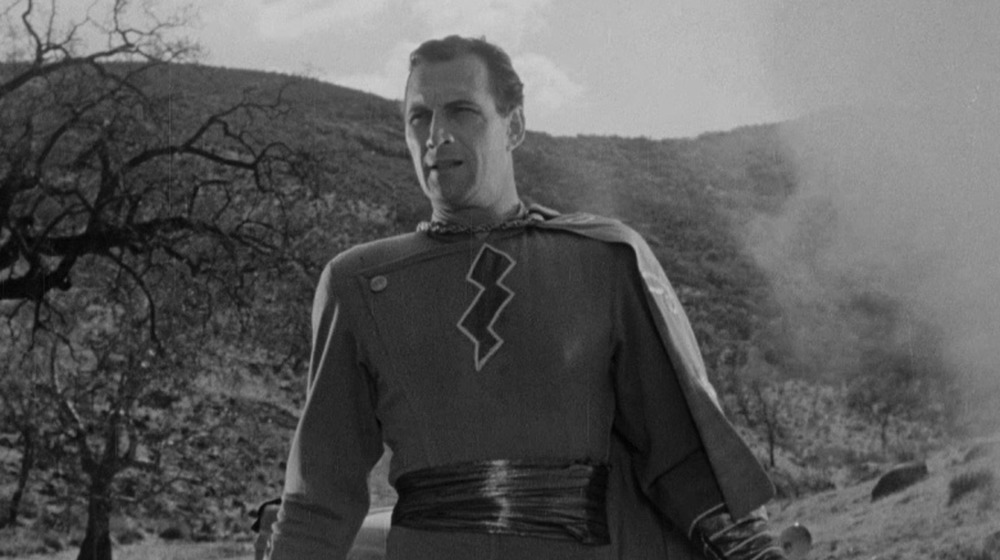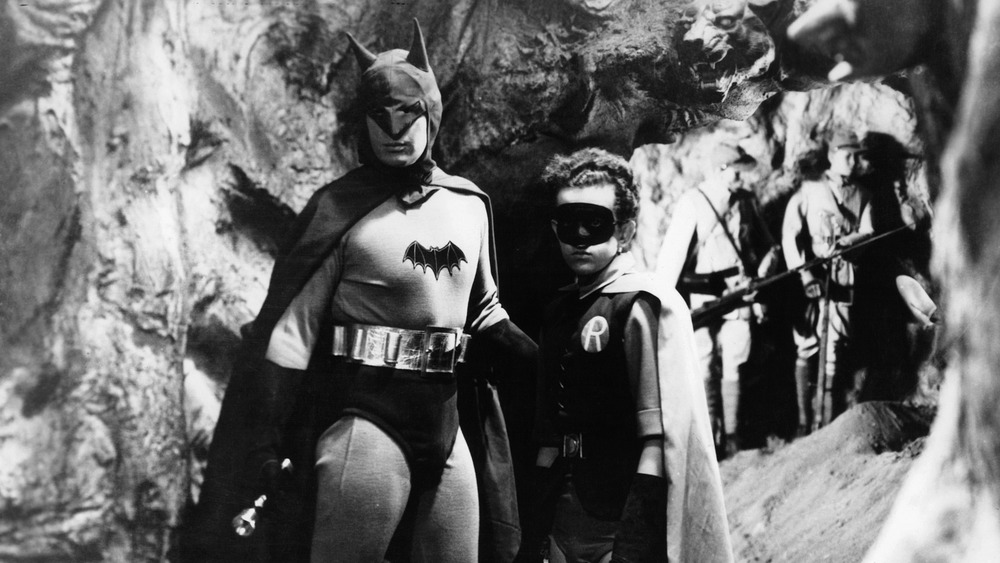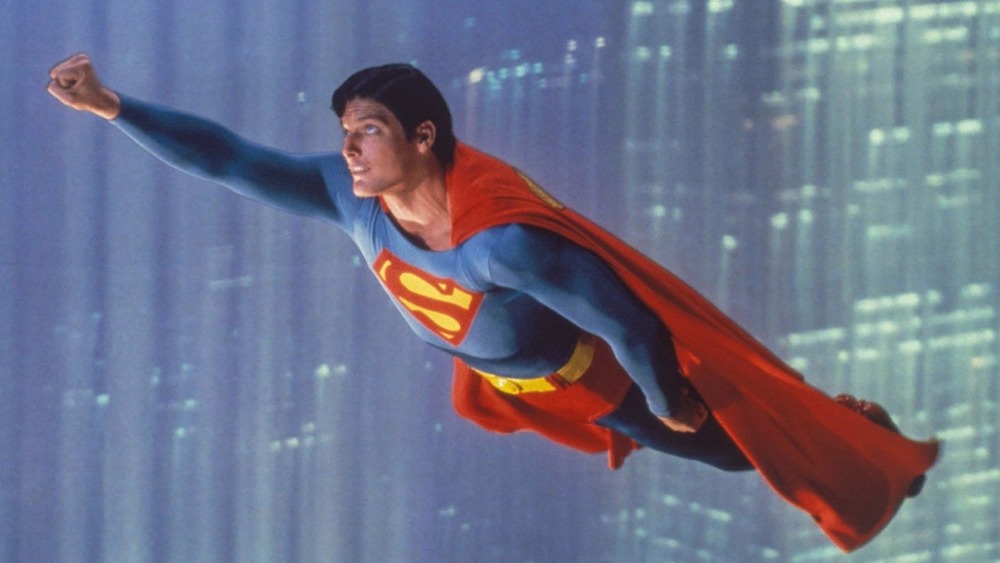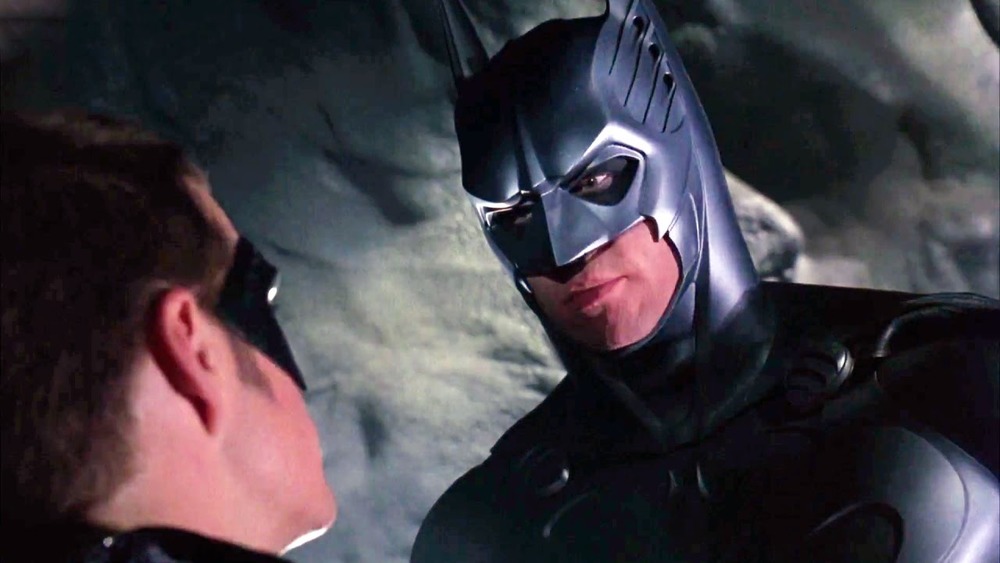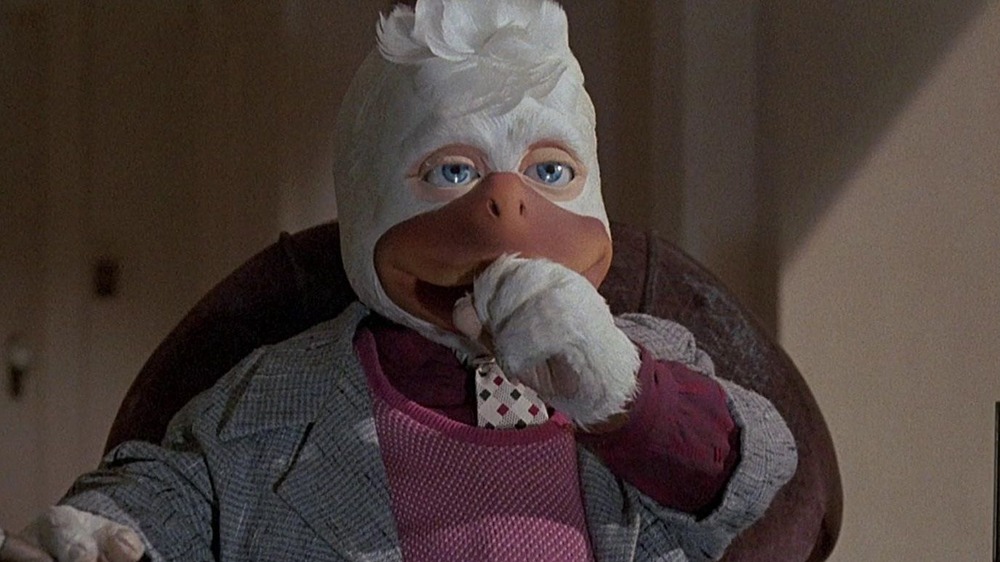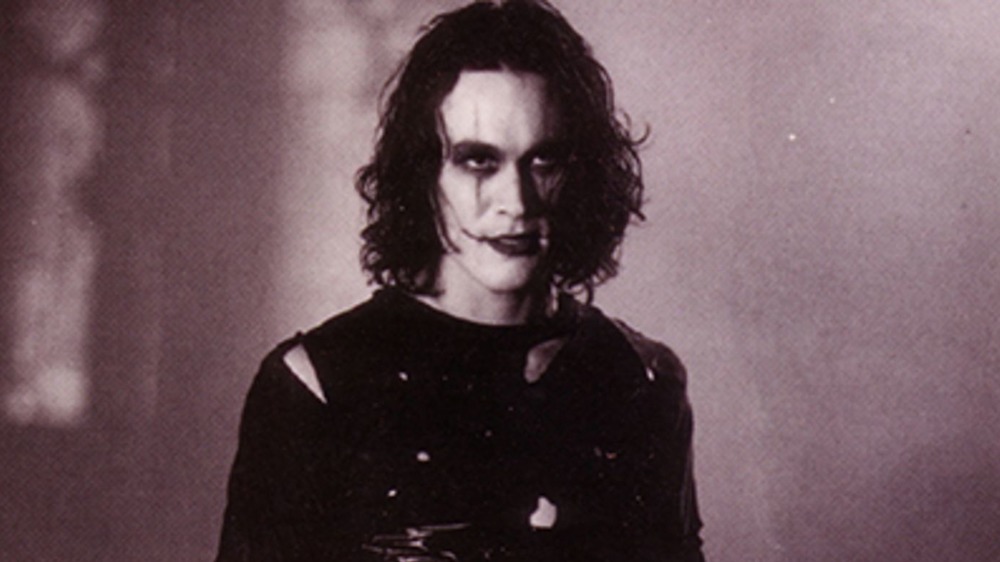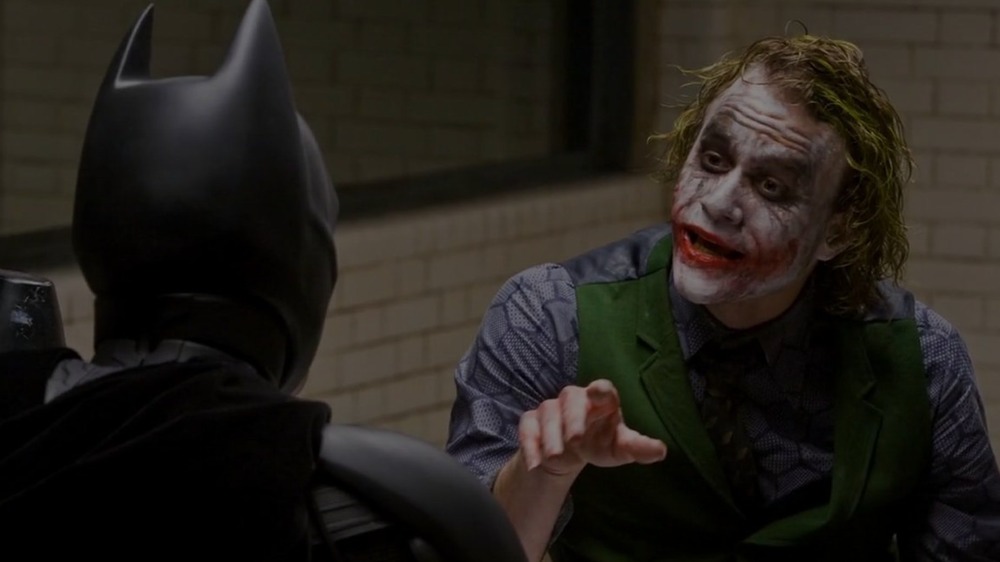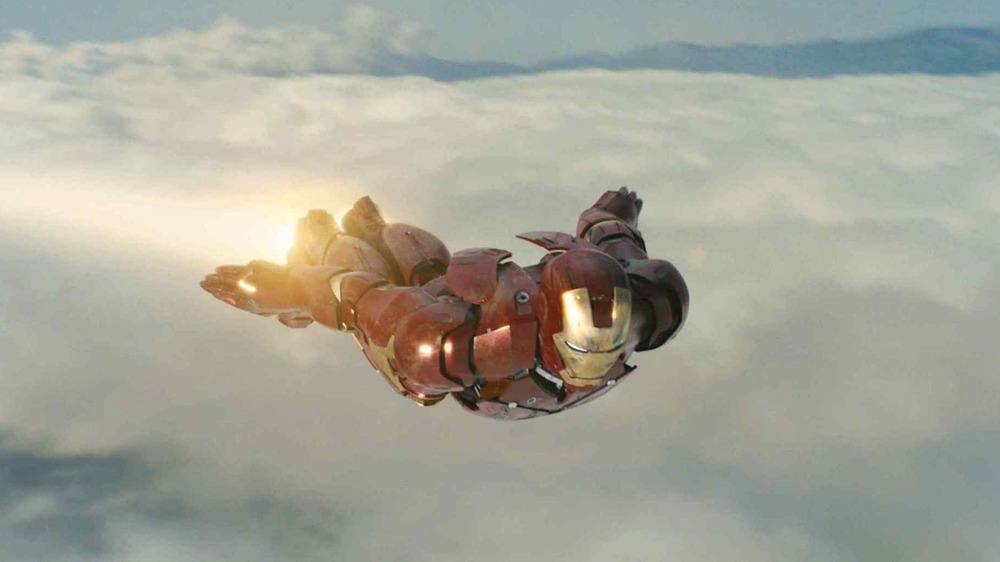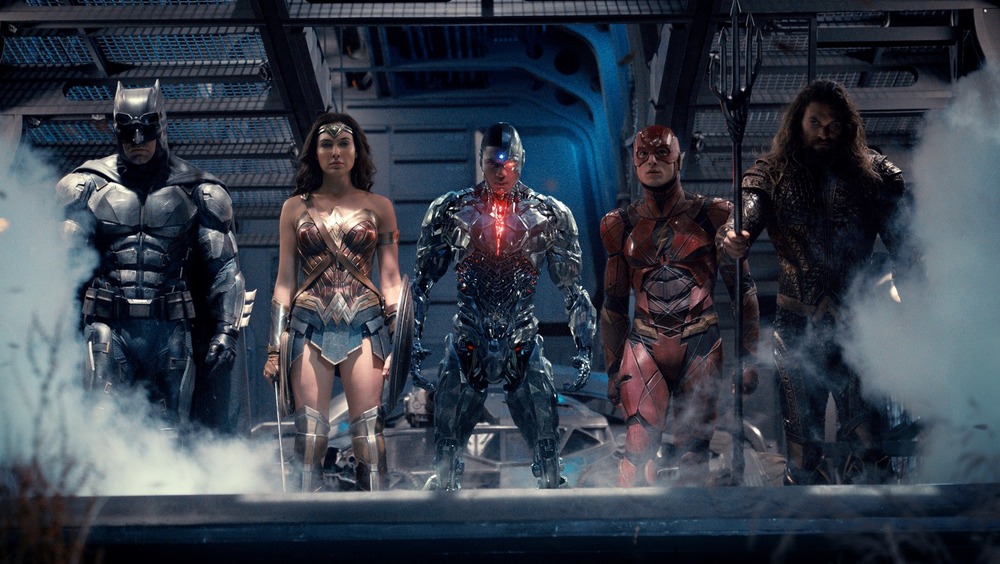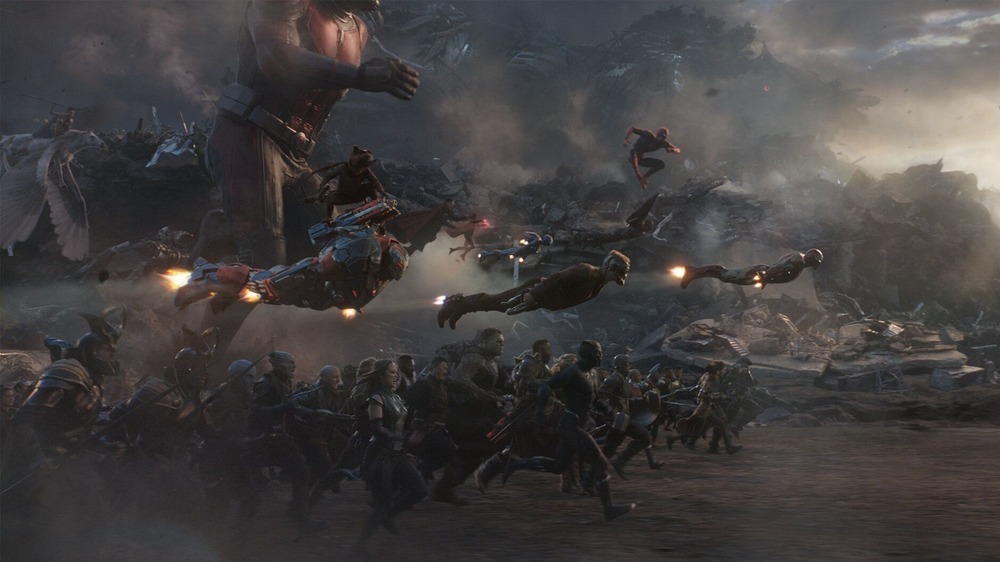The History Of Superhero Films Explained
It may seem like superhero movies have been around forever, and the truth is that they've been with us for nearly as long as the comics they're based on. While we might now be in what you could call a golden age for the genre, the first screen versions of some of the most beloved characters to emerge from the "funny pages" started unspooling in movie houses nearly 80 years ago.
Of course, those early incarnations of characters like Batman and Superman looked very different back then, when studios regarded them as cheap Saturday matinee quickies meant for kids. That all began to change in 1978, when a little movie called Superman made audiences believe, as the marketing proclaimed at the time, "that a man could fly."
Even after the massive success of Superman, however, the genre moved forward in fits and starts for the next 30 years. But in 2008 the arrival of Iron Man and The Dark Knight changed the course of cinema history. Both films launched the current wave of cinematic superhero universes that have topped the box office chart regularly. Here's a look back at where it all started and how it ended up becoming the dominant form of filmed entertainment with audiences worldwide.
Origin story
The first superhero movie was arguably a 12-part serial and French production called Judex, made in 1916 by filmmaker Louis Feuillade (here's a list of other superhero movies produced by foreign countries). But the first American superhero to appear onscreen (also in a 12-chapter serial) was Mandrake the Magician in 1939. Warren Hull starred as the title character and battled the Wasp, an evil masked scientist trying to steal an energy machine. The Shadow followed in 1940, in which a former World War I aviator uses a variety of alter egos to fight crime. But the first true superhero movie — the kind we are familiar with today — arrived in 1941 with the 12-chapter Adventures of Captain Marvel.
Based on a strip published by Fawcett Comics (before it was picked up by DC), Captain Marvel starred Tom Tyler as the powerful title character (better known now as Shazam) and Frank Coghlan Jr. as his young alter ego Billy Batson. Meanwhile, a drastically different Captain America — not the Steve Rogers we know and love, but a district attorney named Grant Gardner — debuted in a 1944 serial loosely inspired by the character from Marvel predecessor Timely Comics. It would be the only big-screen appearance by a Marvel superhero for 40 years.
The Clark and Bruce show
The world's two most iconic superheroes, Superman and Batman, made their print debuts in 1938 and 1939 respectively. But the first filmed appearance of the Caped Crusader (played by Lewis Wilson) and his sidekick Robin (Douglas Croft) didn't take place until 1943 with the arrival of a 15-chapter serial simply called Batman.
According to Bruce Scivally's book Billion Dollar Batman, the serial took liberties with the comics: instead of the Batmobile, the Dynamic Duo tooled around in a Cadillac driven by faithful butler Alfred. Batman also worked with the federal government, while villains from the comics were passed over for an evil Japanese criminal called Dr. Daka. A sequel called Batman and Robin, starring Robert Lowery and Johnny Duncan, premiered in 1949.
As for Batman's pal Superman, he got his own 15-part serial in 1948, with Kirk Alyn as the Man of Steel and Noel Neill as Lois Lane. It was followed by Atom Man vs. Superman in 1950, but the serial format was already losing steam at the box office. A standalone movie, Superman vs. the Mole Men — in which Alyn was replaced by George Reeves — was released theatrically in 1951 as a test run for the Adventures of Superman TV series, which debuted in 1953.
Batman and Superman reborn
Although The Adventures of Superman and the smash 1966 ABC series Batman kept the genre alive on television, superheroes did not re-emerge in theaters until 1978 with Superman: The Movie. Produced at a staggering cost of $55 million, the Richard Donner-directed film was an epic in every way, from its star-studded cast (led by Marlon Brando as Jor-El and Gene Hackman as Lex Luthor) to its then-pioneering visual effects to its galaxy-spanning scope. At the center of it all was unknown actor Christopher Reeve, whose work as both the earnest Clark Kent and the majestic Superman has never been bettered.
Superman was received enthusiastically by both critics and audiences, earning a massive $300 million at the box office. It was followed in 1981 by Superman II, which Donner had begun filming at the same time as the first movie. Richard Lester took over the second movie after Donner was fired by producers Alexander and Ilya Salkind over budget concerns. While a bit of a patchwork editorially, Superman II was also a hit ($190 million) if not as big as its predecessor.
Although Reeve would don the cape for four installments in all, the Superman series began to fade at the box office throughout the rest of the 1980s. But Bruce Wayne was ready to take up the slack after nearly a decade of development hell. Directed by Tim Burton and starring Michael Keaton in the title role and Jack Nicholson as the Joker, Batman was the blockbuster movie of 1989, earning more than $411 million at the box office. Dispensing with the camp tone of the 1960s series, the movie adopted the darker, more psychologically twisted approach of comics like The Dark Knight Returns.
The kryptonite years
Neither Superman nor Batman were able to sustain the box office or quality that they both established with their first hit movies. Christopher Reeve continued as Kal-El in 1983's Superman III and 1987's Superman IV: The Quest for Peace, but shrinking budgets and a more slapdash approach to the material had a negative impact on both. The Salkinds tried a different tack with 1984's Supergirl, but that did not fare well either. Following Superman IV, Big Blue vanished from movie screens until 2006.
After the success of Batman in 1989, Keaton and Burton reunited on Batman Returns (1992), also featuring Michelle Pfeiffer as Catwoman and Danny DeVito as the Penguin. But the film's darker, psychosexual tone baffled family audiences and led to a drop-off in box office. As a result, Burton and Keaton exited, with Joel Schumacher taking over behind the camera, Val Kilmer donning the cowl, and Chris O'Donnell suiting up as Robin. Batman Forever (1995) earned more than its predecessor but dismayed fans with its lighter, campier tone.
The Bat bottomed out in 1997 with the even sillier Batman and Robin, in which a clearly uncomfortable George Clooney wore the cowl opposite Arnold Schwarzenegger as Mr. Freeze and Uma Thurman as Poison Ivy. Grossing just $107 million, it's widely regarded as one of the worst superhero movies ever made. A fifth film, Batman Unchained, was scrapped and the Dark Knight was hung out to dry for the next eight years.
Not so Marvel-ous
While DC's Batman and Superman ruled the 1980s and 1990s, only four movies were produced between 1944 and 1997 based on Marvel Comics properties. 1986's Howard the Duck, executive produced by George Lucas, was a live-action take on the cranky talking duck from another planet. Hammered by critics and ignored by audiences, it's been tagged as one of the worst movies of all time.
Marvel vigilante the Punisher didn't fare much better when he made his debut in a 1989 film starring Dolph Lundgren. Poor production values and bad acting sank a film that didn't get a wide release in the U.S. Two more Marvel-based movies, Captain America (1991) and Roger Corman's Fantastic Four (1994) were produced but didn't even make it into theaters (you can see the latter here). Unlike DC, which was owned by Warner Media, Marvel had sold the rights to its many heroes to different companies — but that would start to change in the next millennium.
Other universes
What about movies based on superheroes published by other comic book companies?
One early hit was 1990's Teenage Mutant Ninja Turtles, based on the comics about four talking, evil-fighting turtles. Made for just $13.5 million, it grossed $135 million to become the biggest independent movie of all time and spawned two sequels (plus a reboot). But other comic book properties like The Rocketeer (1991), The Shadow (1994), Tank Girl (1995), Judge Dredd (1995) and The Phantom (1996) all struck out. A rare film starring a different DC character, Steel (1997), also did a quick meltdown, while the only mystery about 1999's spoofy Mystery Men was how it got decent reviews but somehow missed with audiences.
Other hits did emerge: the 1994 comedy The Mask helped Jim Carrey solidify his stardom and clicked with audiences, earning $351 million. That same year also saw the arrival of a film that would arguably become one of the most influential in its genre: The Crow. Starring the late Brandon Lee, whose on-set death added to the film's somber allure, this story of a rock musician who rises from the grave to avenge his own murder and that of his fiancée became a cult classic.
Make mine Marvel!
In 1997, Columbia Pictures released the enormously popular Men in Black, starring Will Smith and Tommy Lee Jones. It was based on a title published by Malibu Comics, which had been purchased three years earlier by Marvel Comics — indirectly making Men in Black Marvel's first hit at the box office. A year later, New Line Cinema released Blade, the first successful movie based directly on a Marvel character. Headlining Wesley Snipes as a human/vampire hybrid who hunts other bloodsuckers, Blade was an unexpected hit — and paved the way for Marvel to finally get a toehold with movie audiences.
Blade arguably opened the door, but 20th Century Fox kicked it down in 2000 with the long-awaited X-Men. Based on one of Marvel's oldest and most popular titles, X-Men had been in development for more than 15 years before director Bryan Singer finally shepherded it to the screen with Patrick Stewart as Professor X, Ian McKellen as Magneto and a then-unknown Hugh Jackman as Wolverine. The $75 million production earned $296 million worldwide, confirming that superheroes not named Superman or Batman could succeed on a large-scale level with audiences.
At the same time, longstanding legal issues surrounding the rights to Marvel's biggest character, Spider-Man, were finally resolved, clearing the way for the webslinger to swing onto the big screen. Directed by Sam Raimi and starring Tobey Maguire, Spider-Man earned a record-busting $407 million in the U.S. alone. Blade II (2002), X2: X-Men United (2003) and Spider-Man 2 (2004) followed in quick succession, almost all improving on their predecessors both in quality and box office. Other Marvel-based movies, such as Hulk (2003), Daredevil (2003), Fantastic Four (2005) and Ghost Rider (2007), had more mixed responses with audiences and critics. But the Marvel movie brand itself was here to stay.
Batman begins...again
In 2005, after years of abandoned ideas and failed reboots, Warner Bros. entrusted one of its two superhero crown jewels, Batman, to a little-known filmmaker named Christopher Nolan, who wanted to pursue a more "realistic" take on the Caped Crusader. Impressing fans and critics alike on its way to a $205 million North American gross, Batman Begins told Batman's full origin story for the first time, veering into the more noirish, psychologically dark kind of territory than fans had been craving.
One year later, Warner Bros. tried reviving the Man of Steel after attempts like Superman Lives and Superman: Flyby failed to get off the ground. Superman Returns, starring Brandon Routh and directed by Bryan Singer, ignored the third and fourth films in the series and acted as a direct follow-up to Superman II. It was seen as too slavish to the first two films and earned a paltry (for the time) $391 million worldwide. Superman was grounded again, this time for seven years.
But not Batman. 2008 saw the release of The Dark Knight, Christopher Nolan's earth-shaking sequel to Batman Begins. The film, which pitted Bale's Batman against the Joker (a definitive, Oscar-winning portrayal by Heath Ledger, who died before the film's release), was not just a colossal global blockbuster but an epic crime thriller that changed the perception of the superhero genre. It remains a pinnacle of superhero movies, not even topped by Nolan's sprawling, unwieldy but still powerful conclusion to his Batman trilogy, 2012's The Dark Knight Rises.
The big bang
Marvel, through studios like Sony and Fox, continued to churn out movies during the mid-to-late-2000s, although entries like X-Men: The Last Stand (2006), Spider-Man 3 (2007) and X-Men Origins: Wolverine (2009) began to decline in quality. The comics giant was tiring of seeing the screen versions of its characters controlled by other companies, so in 2006 it established a $525 million line of credit with Merrill Lynch and launched Marvel Studios with a proposed slate of 10 pictures.
The first of those movies was 2008's Iron Man, starring Robert Downey Jr. in a career-reviving role as industrialist-turned-superhero Tony Stark. Directed by Jon Favreau, the fast-paced, witty movie launched the Marvel Cinematic Universe, a visionary, unparalleled 23-entry (and counting) series of interlocked films in which characters crossed freely into each other's stories and teamed up every few movies to defeat a cosmos-threatening menace — the screen equivalent to the comics that fans had enjoyed for decades.
Iron Man was followed in rapid succession by The Incredible Hulk (2008), Iron Man 2 (2010), Thor (2011), Captain America: The First Avenger (2011) and, in 2012, The Avengers, which brought the characters from the previous five films together in a $1.5 billion-earning game-changer. Along the way Marvel was purchased by Disney for $4 billion, continuing its incredibly successful box office run with movies like Captain America: The Winter Soldier (2014), Guardians of the Galaxy (2014), Ant-Man (2015), Captain America: Civil War (2016), Thor: Ragnarok (2017) and the groundbreaking Black Panther (2018), the first superhero movie nominated for a Best Picture Oscar. Marvel even helped Sony resurrect its struggling Spider-Man franchise by recasting him and introducing him into the MCU.
Avengers: Infinity War (2018) and Avengers: Endgame (2019) — the latter the highest-grossing movie of all time — brought the first decade of the MCU to an epic close, uniting all its heroes in a titanic showdown with the universe-destroying super-villain Thanos.
The not-so-big bang
Warner Bros. watched the rise of the MCU and thought: we want one of those!
After a previous effort at a movie starring the Justice League — the DC counterpart to the Avengers — stalled out in 2008, Warner rolled the dice in 2011 with Green Lantern, starring Ryan Reynolds as the DC space policeman. But the overstuffed, confusing film left audiences cold and nearly killed Warner's plan to expand the DC cinematic canon.
The company went back to its comfort zone, rebooting Superman with director Zack Snyder and producer Christopher Nolan. 2013's Man of Steel divided fans with its more conflicted version of Kal-El (Henry Cavill), but it had its strengths and powerful moments. Yet the studio made a fatal mistake by following up with Batman v Superman: Dawn of Justice, an attempt to rush a DC film universe into existence by not just introducing a new Batman (Ben Affleck), but Wonder Woman, the Flash, Cyborg, and Aquaman.
BvS and the disastrous Justice League both underperformed at the box office, but Wonder Woman, released five months before Justice League, was a hit, earning $400 million in North America as the first female-led superhero movie. Aquaman (2018) and Shazam! (2019) also de-emphasized the shared universe and delivered more light-hearted standalone adventures. Sequels to all three, as well as movies starring the Flash, a retooled Suicide Squad and a new Batman (Robert Pattinson) soon entered development, although the only way we'll see Superman or the Justice League again for now is via the Snyder Cut.
Where we are today
The superhero movie may be the dominant genre in theaters today. In addition to the MCU, the DC series, the Fox Marvel universe and the Sony Marvel Spider-verse, we've had original one-offs or mini-franchises like Pixar's The Incredibles (2004) and its 2018 sequel; Hellboy (2004) and its sequel, Hellboy: The Golden Army (2008); plus superhero satires and deconstructions like Unbreakable (2000) and its Split/Glass sequels, Hancock (2008), Watchmen (2009) and Kick-Ass (2010). Other comic book publishers continue to attempt their own film franchises, as Valiant Comics did in 2020 with Bloodshot.
After retooling the Marvel mutants with X-Men: First Class (2011), X-Men: Days of Future Past (2014) and Logan (2017), as well as the raunchy R-rated hijinks of Ryan Reynolds as Deadpool (2016), Fox's Marvel machine ran out of gas on the turgid X-Men: Apocalypse (2016) and Dark Phoenix (2019). But now that Disney owns Fox, look for the X-Men and Fantastic Four to be integrated into the MCU.
Meanwhile, with the success of Spider-Man spinoff Venom (2018) and the animated Spider-Man: Into the Spider-Verse, Sony plans to build its own universe around Spidey's rogues gallery with movies like Morbius and Venom: Let There Be Carnage. A third Sony/MCU Spider-Man movie is on the way as well, and we're sure to see the wallcrawler in at least one more MCU team-up.
As for the MCU itself, the launch of its next phase — which will include shows on Disney+ like WandaVision and The Falcon and the Winter Soldier — was put on hold by the coronavirus. But movies like Black Widow, Eternals, Thor: Love and Thunder, Doctor Strange in the Multiverse of Madness, and Shang-Chi and the Legend of the Ten Rings are all on tap, along with a rebooted Blade. Both DC and Marvel plan to introduce the "multi-verse" to their franchises, so watch for even more interesting crossovers in the days ahead. Clearly, the history of the superhero movie is still being written.
